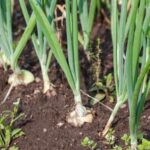Are you interested in creating a garden that is not only productive but also beautiful? Mixing flowers and vegetables gardening is a unique and rewarding way to maximize the potential of your garden space. This article will explore the benefits of combining flowers and vegetables, including the aesthetic appeal, space-saving advantages, and practical tips for maintenance.
When it comes to mixing flowers and vegetables, the possibilities are endless. Not only does it add visual interest to your garden, but it also offers numerous benefits for both plants. From attracting beneficial insects to improving soil health, there are many reasons to consider integrating flowers into your vegetable garden.
In this article, we will delve into the aesthetics of mixing flowers and vegetables gardening, provide tips for efficiently combining them in limited garden space, discuss companion planting strategies, guide you on selecting the right plants that complement each other, offer practical maintenance advice, and more. Whether you are a beginner or an experienced gardener, there will be valuable insights for everyone looking to create a harmonious blend of flowers and vegetables in their garden.
The Aesthetics of Mixing Flowers and Vegetables
When it comes to mixing flowers and vegetables in your garden, one of the key aspects to consider is the aesthetics of creating a beautiful and functional space. By carefully planning and designing your garden layout, you can create a visually appealing and productive garden that not only provides you with fresh produce but also adds beauty to your outdoor space.
Color Coordination and Contrast
When combining flowers and vegetables in your garden, consider the colors of the blooms as well as the foliage of both types of plants. Choose a color scheme that complements each other or creates eye-catching contrast. For example, pairing bright yellow sunflowers with deep green spinach or lettuce can create a striking visual effect. Additionally, using different shades of green from various vegetable plants combined with pops of colorful flowers can add depth and interest to your garden.
Plant Heights and Textures
Another important aspect of creating an aesthetically pleasing mixed garden is considering the heights and textures of the plants. Tall flowering plants such as cosmos or hollyhocks can be paired with low-growing vegetables like radishes or herbs, creating a visually dynamic landscape. Adding different textures, such as feathery ferns or spiky ornamental grasses among your vegetables, will also add visual interest to your garden.
Designing Functional Spaces
In addition to aesthetics, it’s essential to create a functional space when mixing flowers and vegetables in your garden. Consider incorporating pathways for easy access to all areas of your garden, as well as designated areas for both ornamental flowers and edible plants. By carefully designing your garden layout, you can ensure that it is not only visually pleasing but also practical for maintenance and harvesting.
By paying attention to color coordination, plant heights and textures, as well as designing functional spaces within your mixed flower and vegetable garden, you can create a beautiful outdoor space that is both visually appealing and productive. With careful planning and design considerations, you can achieve a harmonious balance between aesthetics and functionality in your mixed garden.
Maximizing Space
When it comes to maximizing space in your garden, combining flowers and vegetables can be a great way to make the most of limited area. By carefully planning and selecting the right plants, you can create a beautiful and functional garden that provides both aesthetic appeal and a bountiful harvest. Here are some tips for efficiently combining flowers and vegetables in limited garden space:
- Vertical Gardening: Utilize trellises, arbors, and other vertical structures to grow climbing vegetables like cucumbers, peas, or beans. This allows you to save ground space for planting flowers while still growing productive vegetable crops.
- Interplanting: Instead of planting vegetables in large blocks, consider interplanting them with flowers. For example, plant marigolds or nasturtiums alongside your tomato plants to deter pests and add color to your garden.
- Container Gardening: If you have limited ground space, consider using containers for growing both flowers and vegetables. You can mix and match different types of plants in one container, creating a beautiful display that also saves space.
By implementing these tips for efficient combination of flowers and vegetables in limited garden space, you can create a garden that is both visually appealing and productive. Whether you have a small backyard or just a balcony, there are always creative ways to make the most out of your gardening space. With careful planning and implementation, mixing flowers and vegetables can result in a colorful, thriving garden that yields both beauty and bounty.
Companion Planting
What Is Companion Planting?
Companion planting is the practice of growing different plants in close proximity to one another for mutual benefit. When it comes to mixing flowers and vegetables gardening, companion planting can be a valuable tool for optimizing the health and productivity of your garden. By strategically pairing flowers with vegetables, you can create a more balanced ecosystem that deters pests, promotes pollination, and maximizes the use of available nutrients.
The Benefits of Companion Planting
One of the key benefits of companion planting is pest control. Certain flowers have natural properties that repel pests, which can help protect your vegetable crops from damage. Additionally, some flowers attract beneficial insects like ladybugs and bees, which are essential for pollinating many vegetable plants. By incorporating these flowers into your garden, you can support a healthier and more resilient ecosystem.
Examples of Successful Combinations
When it comes to mixing flowers and vegetables gardening through companion planting, there are several successful combinations to consider. For example, marigolds are known for their ability to repel nematodes in the soil, making them an ideal companion for tomato plants.
Nasturtiums are another popular choice due to their ability to repel aphids while attracting predatory insects that feed on common garden pests. By researching specific flower and vegetable pairings, you can identify combinations that will enhance the overall health and productivity of your garden.
Selecting the Right Plants
When it comes to mixing flowers and vegetables in your garden, selecting the right plants is crucial for a successful and aesthetically pleasing result. By choosing plants that complement each other, you can create a harmonious balance of beauty and functionality in your garden.
To start, consider the height and spread of each plant. This will help you determine which plants can be placed together without one overshadowing the other. For example, tall vegetables like tomatoes or corn can provide support for climbing flowers like morning glories or sweet peas.
In addition, think about the growth habits of each plant. Some vegetables may have sprawling growth patterns that can be complemented by low-growing flowers such as marigolds or nasturtiums. These flowers not only add color and beauty to your garden, but they can also act as natural pest repellents for your vegetables.
Another important factor to consider when choosing plants is their sun and water requirements. Make sure to select flowers and vegetables that have similar needs for sunlight and watering to ensure they thrive together in the same garden space. Taking into account these details will help you create a balanced and cohesive mixed garden that benefits both the aesthetic appeal and the productivity of your outdoor space.
- Consider the height and spread of each plant
- Take note of the growth habits
- Check the sun and water requirements
Practical Tips for Maintenance
After successfully combining flowers and vegetables in your garden, it is important to understand the maintenance required to keep them thriving. One key aspect of maintenance is proper watering. Flowers and vegetables have different water needs, so it’s essential to strike a balance. Most vegetables require consistent moisture, while many flowers can withstand periods of drought. This means that you need to be mindful of the watering schedule in order to meet the needs of both types of plants.
Another important aspect of maintenance is pest control. Since you are growing a variety of plants, it is crucial to stay on top of pest management. Some pests may target specific plants, while others may affect all vegetation in your garden. It’s beneficial to research natural methods for pest control as some chemicals may not be suitable for all types of flora.
Finally, regular pruning and deadheading are essential tasks for maintaining a mixed flower and vegetable garden. Deadheading involves removing spent flowers before they can produce seeds, which encourages plants to continue blooming. Pruning ensures that plants maintain their shape and don’t overcrowd one another, allowing adequate airflow and sunlight exposure.
| Flower Type | Water Needs |
|---|---|
| Roses | Moderate |
| Zinnias | Low |
| Lavender | Low |
Harvesting and Enjoying the Bounty
When it comes to mixing flowers and vegetables gardening, one of the most rewarding aspects is the harvesting and enjoying the bounty of your mixed garden. Not only do you get to enjoy the aesthetic beauty of your garden, but you also get to savor the delicious produce that you have grown.
Harvesting from a mixed garden can be particularly satisfying because you have a wide variety of fruits, vegetables, and flowers to choose from. This allows you to create stunning bouquets that not only brighten up your home but also make great gifts for friends and family. From vibrant zucchinis to colorful dahlias, the possibilities are endless when it comes to creating beautiful arrangements from your mixed garden.
In addition to harvesting produce and flowers, making the most of your mixed garden also involves taking steps to preserve your harvest for later enjoyment. Whether it’s canning tomatoes, drying herbs, or pressing flowers, there are many ways to extend the joy of your garden throughout the year. By learning how to properly preserve and store your harvest, you can continue enjoying the fruits of your labor long after the growing season has ended.
| Aspect | Benefits |
|---|---|
| Creating Beautiful Bouquets | Brings aesthetic beauty inside your home; Makes great gifts |
| Preserving Produce | Extend the joy of your garden throughout the year; Enjoy fruits of labor after growing season |
Going Beyond the Basics
As you continue to explore the world of mixing flowers and vegetables gardening, it’s important to consider advanced techniques that can take your garden to the next level. By going beyond the basics, you can enhance the beauty and functionality of your garden while also reaping the benefits of companion planting.
One advanced technique to consider is intercropping, which involves growing different plants in between rows of vegetables. This maximizes space and allows for better utilization of nutrients in the soil. Additionally, intercropping can help deter pests and attract beneficial insects, creating a more balanced ecosystem within your garden.
Another advanced technique for successful mixing of flowers and vegetables is succession planting. This involves planting crops at different times to ensure a continuous harvest throughout the growing season. By carefully planning the timing of plantings, you can optimize space and resources while enjoying a constant supply of fresh produce and vibrant blooms.
Finally, consider experimenting with vertical gardening as an advanced technique for mixing flowers and vegetables. Utilizing trellises, arbors, or other structures can help maximize space while adding visual interest to your garden. Vertical gardening also promotes air circulation and sunlight exposure for both flowers and vegetables, ultimately leading to healthier plants and increased yields.
In conclusion, by exploring these advanced techniques for mixing flowers and vegetables gardening, you can create a truly dynamic and productive garden that is as aesthetically pleasing as it is functional. Whether you try intercropping, succession planting, vertical gardening or all three, these advanced methods will take your mixed garden to new heights as you continue to enjoy the beauty and bounty it provides.
Frequently Asked Questions
Can You Plant Flowers and Vegetables in the Same Planter?
Yes, it is possible to plant flowers and vegetables in the same planter. This practice, known as companion planting, can help deter pests, attract beneficial insects, and promote overall garden health.
Why Should Flowers Not Be Mixed With Fruits or Vegetables?
Flowers should not be mixed with fruits or vegetables because some flowers may attract harmful pests that could damage the edible plants. Additionally, certain flowers may compete for nutrients and space with fruits and vegetables.
What Vegetables Should and Should Not Be Planted Together?
Some vegetables that are beneficial to plant together include carrots and onions, as they can help repel pests from each other. On the other hand, vegetables like potatoes and tomatoes should not be planted together as they are susceptible to similar diseases that could spread easily.
Another example is planting beans near garlic or onions which can hinder their growth due to chemicals released by the alliums.

If you’re looking to get into vegetable gardening, or are just looking for some tips on how to make your current garden better, then you’ve come to the right place! My name is Ethel and I have been gardening for years. In this blog, I’m going to share with you some of my best tips on how to create a successful vegetable garden.





